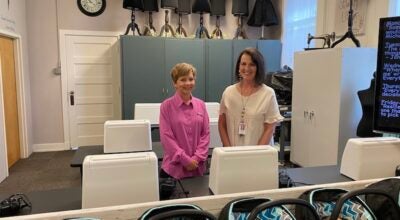Airport eyes future runway expansion
Published 5:22 pm Monday, April 3, 2017
|
Getting your Trinity Audio player ready...
|
The standards of the Chilton County Airport have taken drastic steps forward in recent years and have even bigger plans in store for the future.
“One of the driving goals for the Airport Authority is to make it a facility that benefits every person in this county,” Chilton County Airport Authority board member Billy Singleton said.
The airport was the first in Alabama to add LED runway lights in 2014. Since then, Chilton County has been a model used by several airports throughout the state.
Not one bulb has yet to be changed since its installment in 2014. That is quite the change from the former system, in which bulbs were being changed on a monthly basis.
“We have to create a positive first impression for this county,” Singleton said. “We’ve tried to upgrade the facility, so that when someone steps off that airplane, they’re seeing a progressive county.”
By installing the lights, the airport has cut down on its costs to power the facility and as a result has about $10,000 available to reinvest into other aspects. This allows for the airport to become more self-sufficient and less reliant on funding from the County Commission.
The next major project that the airport has its sights set on is expanding the runway from 4,000 to 5,000 feet.
According to Singleton, the airport plays a big role when it comes to bringing in potential economic development. The extra 1,000 feet will go a long way in strengthening that.
The majority of common business aircraft cannot land on runways shorter than 5,000 feet for safety reasons and insurance requirements.
At this point, business aircrafts must land somewhere else other than Chilton County.
“That doesn’t make us very accessible,” Singleton said. “We have to be able to accommodate our own businesses.”
The safety measure is in place for in the event of an unexpected situation.
According to Singleton, an example would be if an aircraft had to accelerate to take off speed and then reject the takeoff. They have to have a certain distance to stop on pavement.
“We’ve got the ground to put the runway on, but there are a lot of requirements that go along with it,” Singleton said. “We have to be able to protect the approach and departure paths to the runway, which requires us to eliminate obstructions. We do that by acquiring land.”
The timetable is not easy to predict, but at the current projection, the goal for the airport extending to 5,000 feet is within the next three to five years.
“It’s hard to anticipate federal budgets,” Singleton said. “It never goes as fast as we all want it to, but I hope that we’ll see the pace start accelerating.”






